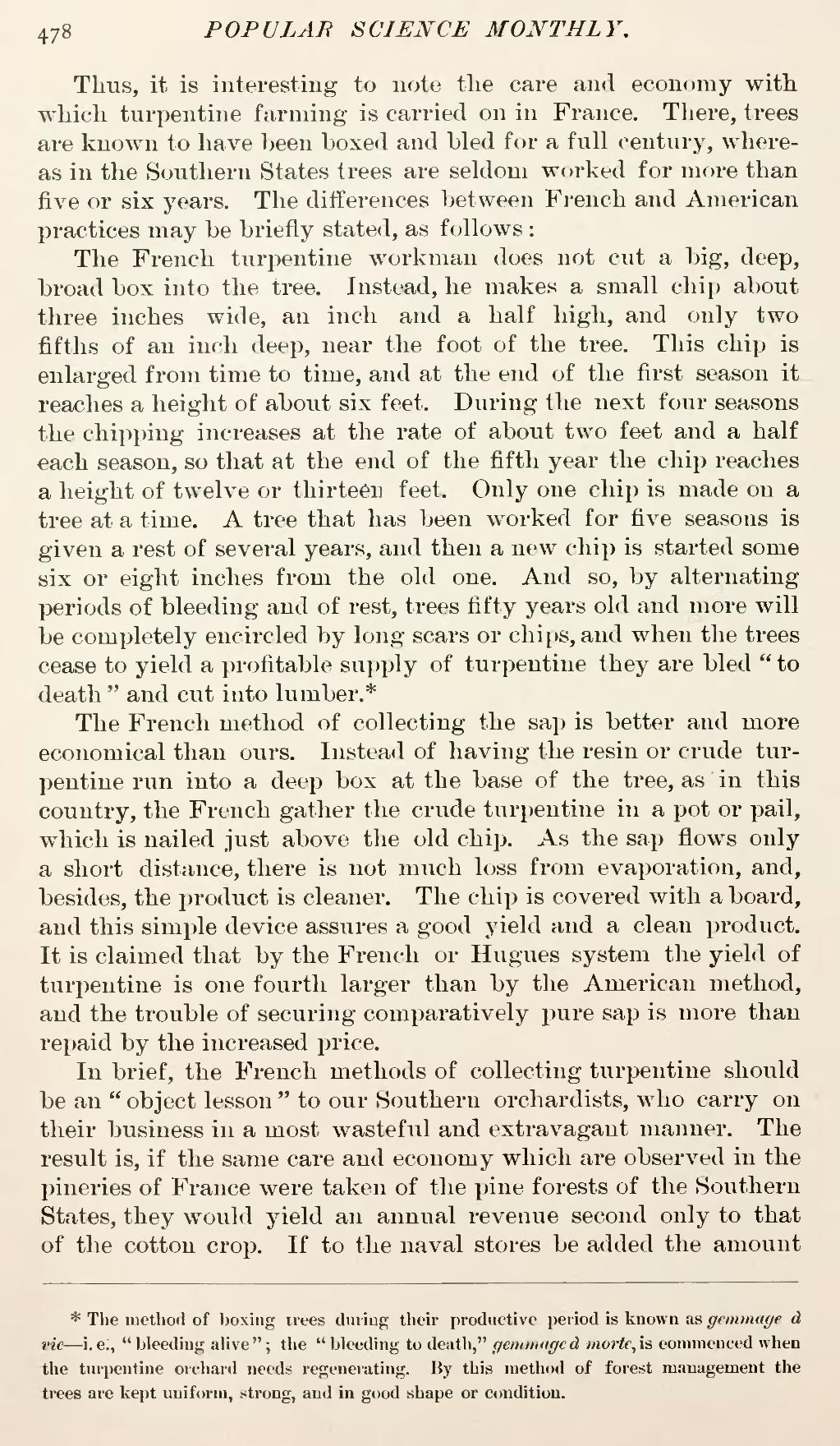Thus, it is interesting to note the care and economy with, which turpentine farming is carried on in France. There, trees are known to have been boxed and bled for a full century, whereas in the Southern States trees are seldom worked for more than five or six years. The differences between French and American practices may be briefly stated, as follows:
The French turpentine workman does not cut a big, deep, broad box into the tree. Instead, he makes a small chip about three inches wide, an inch and a half high, and only two fifths of an inch deep, near the foot of the tree. This chip is enlarged from time to time, and at the end of the first season it reaches a height of about six feet. During the next four seasons the chipping increases at the rate of about two feet and a half each season, so that at the end of the fifth year the chip reaches a height of twelve or thirteen feet. Only one chip is made on a tree at a time. A tree that has been worked for five seasons is given a rest of several years, and then a new chip is started some six or eight inches from the old one. And so, by alternating periods of bleeding and of rest, trees fifty years old and more will be completely encircled by long scars or chips, and when the trees cease to yield a profitable supply of turpentine they are bled "to death" and cut into lumber.[1]
The French method of collecting the sap is better and more economical than ours. Instead of having the resin or crude turpentine run into a deep box at the base of the tree, as in this country, the French gather the crude turpentine in a pot or pail, which is nailed just above the old chip. As the sap flows only a short distance, there is not much loss from evaporation, and, besides, the product is cleaner. The chip is covered with a board, a,nd this simple device assures a good yield and a clean product. It is claimed that by the French or Hugues system the yield of turpentine is one fourth larger than by the American method, and the trouble of securing comparatively pure sap is more than repaid by the increased price.
In brief, the French methods of collecting turpentine should be an "object lesson" to our Southern orchardists, who carry on their business in a most wasteful and extravagant manner. The result is, if the same care and economy which are observed in the pineries of France were taken of the pine forests of the Southern States, they would yield an annual revenue second only to that of the cotton crop. If to the naval stores be added the amount
- ↑ The method of boxing trees during their productive period is known as gemmage à vie—i. e., "bleeding alive"; the "bleeding to death," gemmage à morte, is commenced when the turpentine orchard needs regenerating. By this method of forest management the trees are kept uniform, strong, and in good shape or condition.

